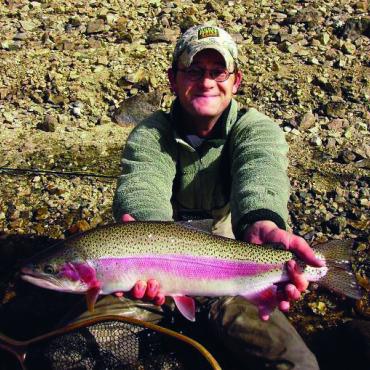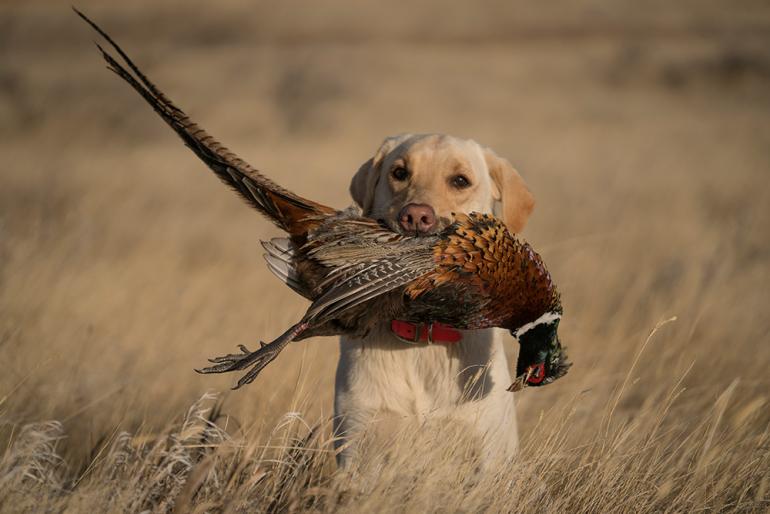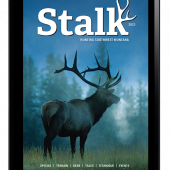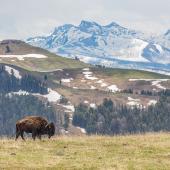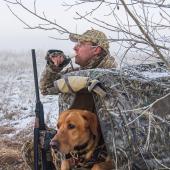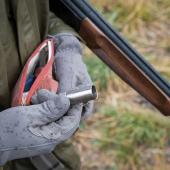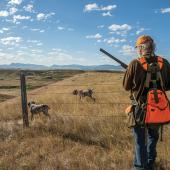Dead Ringers
The hunt for Mr. Cogburn.
When it comes to unlikely conservation success stories, the Chinese ring-necked pheasant has to be among the most interesting. As a species, Phasianus colchicus is in no way, shape, or form native to the high plains, grassy prairies, or river bottoms it now thrives in. Ringnecks were originally imported to North America from mainland China in 1818 by a California judge. The first batch of immigrants consisted of 30 live birds, four of whom died on the boat ride across the Pacific. Once stateside, the remaining 26 survivors were released into the wild to fend for themselves. Apparently, these were some hardy birds; they adapted easily to their new country and within a decade of their release, the decedents of these originals were so fecund that the population was able to sustain a harvest of approximately 50,000 birds.
Habitat
It is incredibly rare to find pheasants more than a mile or so from some sort of agricultural field. While they will hole up in coulees, creek and river bottoms, and cattail and scrub patches, they are never more than a quick flight away from food. When scouting likely pheasant country, concentrate your focus on places where wild and cultivated habitats intersect. Water sources are also important; if your chosen area has all three, you’ll most likely find birds. Since Montana’s pheasant season opens in early October and runs through December, most grain crops will have been harvested. Focus on the edges, corners, and low spots near these fields. In most cases, harvesting machines will leave good amounts of grain and seeds in these areas, and this will provide motivation for hungry, winter-prepping birds to leave the thick confines of cover.
Behavior
While they are accomplished fliers, pheasants tend to run when pushed, and often their bobbing, weaving sprint will end in an explosion right in your or your hunting dog’s face. The sudden burst of color, chaos, and noise can make it difficult to get a good shot. Roosters, the only pheasants that hunters are allowed to take, have long tails which act as a form of optical distraction and can cause a hunter to misjudge the lead length necessary for a clean shot. Once a rooster is airborne, he’s usually moving in the neighborhood of 60 miles per hour, and the proper lead on that bird may be farther than you think.
Gear
The old standbys of 12- or 20-gauge shotguns are the preferred weapons for pheasant. While that trusty 870 pump is tried and true, an over-under allows for a slightly quicker follow-up shot. In Montana, our ringneck season spans most of the autumn and stretches into early winter, so clothing and footwear should be versatile enough to handle warm weather or several inches of snow and sub-freezing temperatures. Synthetic or wool layers are ideal, and if wet conditions are likely, ditch the cotton and opt for something more likely to retain body heat and dry quickly.
With cover and conditions being so variable when pursuing pheasants, neoprene knee-boots such as Mucks or Bogs may be preferable to those of traditional leather. Because pheasants love farm fields, you’ll most likely be hunting on or near private land. Download the OnXmaps app for your smart phone, or get the chip for your GPS unit. In addition, always carry a traditional paper map in your hunting vest or pack. Knowing your exact location is the best way to avoid conflict with landowners. While not required, it’s a good idea to wear some hunter’s orange, and if you’re fortunate enough to be hunting with a dog, get Bridger into a vest as well. Not only does this help prevent shooting accidents, it makes the dog easier to locate should it venture into a thicket or patch of tall grass.
Keeping dogs in mind, there are very few things in life finer than hunting birds over a well-trained bird dog. While not totally necessary, a well-trained bird dog can easily retrieve wounded birds that may be missed, and one with good pointing ability will drastically increase actual shooting opportunities.
Regs
In Montana, our pheasant season starts several weeks later than regular upland-bird season, usually dovetailing with the antelope opener. This is important because as previously mentioned, hen pheasants are strictly illegal to harvest, and in the right lighting conditions, a flushed hen can look an awful lot like a grouse. Again, due to their proclivity for grain crops, ringnecks are overwhelmingly found on private land. Of course, some exceptions exist, but a significant amount of research and planning will be required before attempting a public-land pheasant hunt. For more info, check out fwp.mt.gov or gallatinvalleypf.org.


